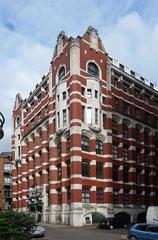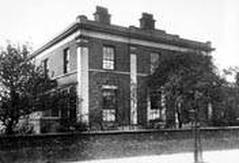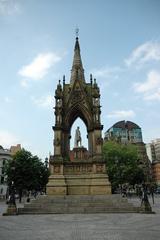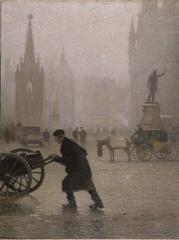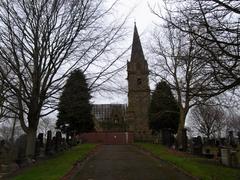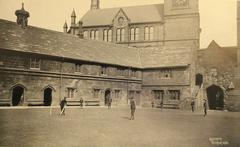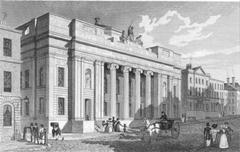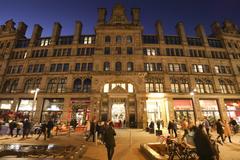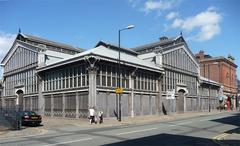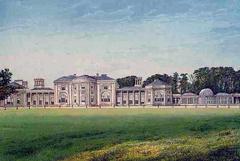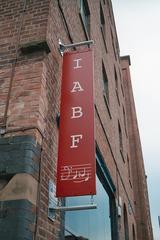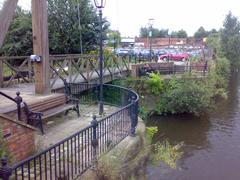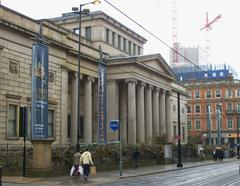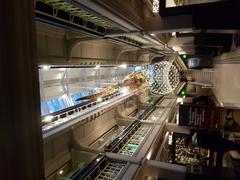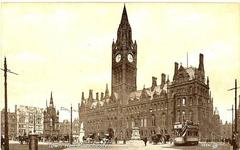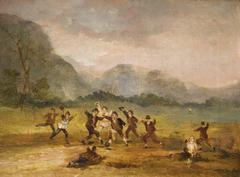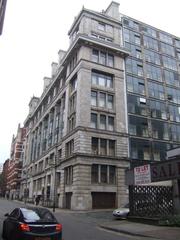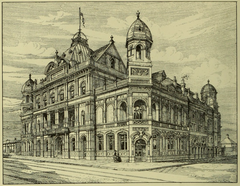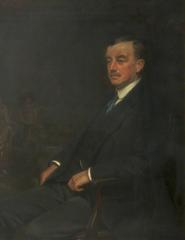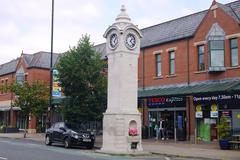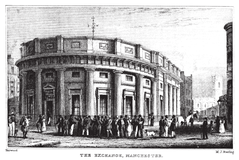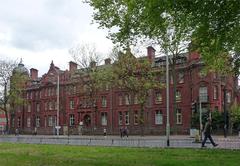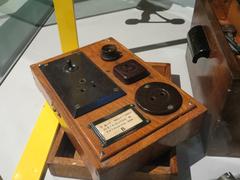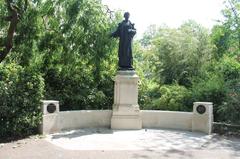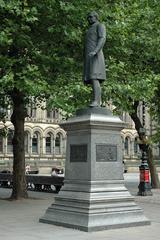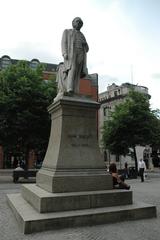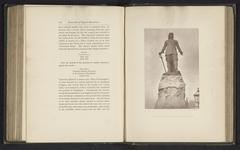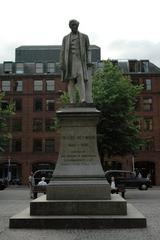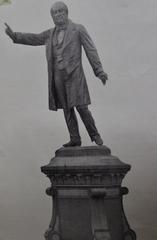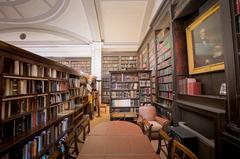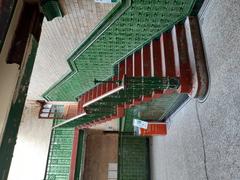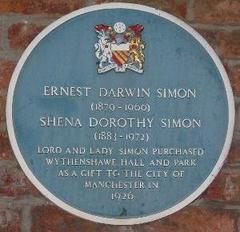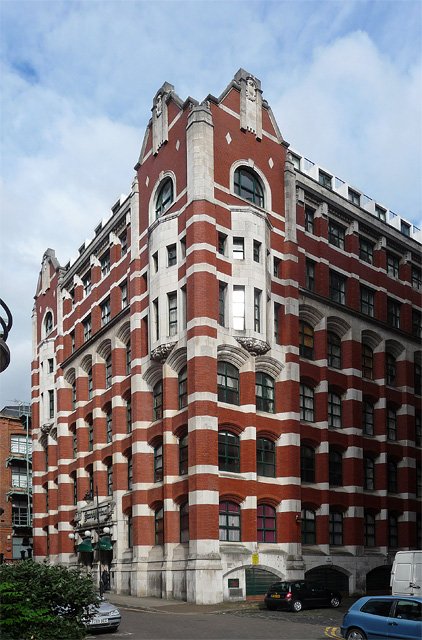
Granby House Manchester: Visiting Hours, Tickets, and Historical Site Guide
Date: 14/06/2025
Introduction
Granby House, located in Manchester’s Granby Village, is a distinguished historical and architectural landmark that reflects the city’s industrial and urban heritage. Originally built in the early 20th century as a commercial warehouse by architect G. H. Goldsmith, the building showcases the evolution of Manchester from an industrial center to a modern metropolis. Its red brick and Portland stone façade, adorned with Art Nouveau motifs, stands as a testament to the city’s Edwardian-era architectural innovation (Goodwin Fish; Manchester Victorian Architects).
Today, Granby House is primarily a residential complex, following adaptive reuse efforts that preserved its historic character while integrating modern amenities. Although interior access is restricted, the building’s exterior continues to attract architecture enthusiasts, photographers, and visitors exploring Manchester’s rich heritage. Its central location near Manchester Piccadilly Station and major cultural sites makes it an ideal starting point for those interested in the city’s history (Historic England; Visit Manchester).
This guide covers Granby House’s history, architectural significance, visiting information, accessibility, nearby attractions, and practical travel tips. Whether you are a history buff, architecture fan, or curious traveler, this resource will help you make the most of your visit to this emblematic Manchester landmark.
Historical Background
Origins and Early 20th Century Context
Granby House was constructed in 1911 by Goldsmith and Son as a shipping and packing warehouse, reflecting Manchester’s prominence as a hub for textile and goods trade during the industrial era (Goodwin Fish). Its red brickwork, Portland stone dressings, and distinctive Art Nouveau detailing exemplify the period’s blend of utilitarian function and architectural elegance. The building’s location on Granby Row placed it at the heart of Manchester’s commercial activity, serving both storage and office needs for the city’s thriving business community.
Adaptive Reuse and Modern Transformation
In 1985, Granby House underwent a sensitive conversion from warehouse to residential apartments. This adaptive reuse project preserved its historic façade and many original features while modernizing the interior for contemporary living (Goodwin Fish). The transformation is representative of a broader trend in Manchester, where former industrial buildings have been revitalized to support urban regeneration and residential growth.
Architectural Significance
Art Nouveau Motifs and Materiality
Granby House stands out for its use of red brick and Portland stone, materials popular in early 20th-century Manchester. Its Art Nouveau motifs—including flowing stonework, ornate window surrounds, and decorative banding—set it apart from other commercial buildings of its time (Goodwin Fish). These features reflect the city’s openness to architectural experimentation during the Edwardian era.
Structural Layout and Interior Features
The building’s layout, typical of early 20th-century warehouses, originally featured large open-plan spaces and expansive windows. Many of these elements were retained during the residential conversion, including high ceilings, exposed brickwork, and original window openings that flood the interiors with natural light.
Relationship to Surrounding Architecture
Granby House is part of a cluster of significant buildings along Granby Row, including the Grade II listed Orient House, also designed by G. H. Goldsmith (Julie Twist Properties). The area’s architectural diversity is further enriched by proximity to landmarks such as the Kimpton Clocktower Hotel (formerly the Refuge Assurance Building), and the grand structures of Whitworth Street (Manchester Pocket Guide).
Preservation and Heritage Value
Conservation Efforts
Granby House’s conversion is a model of heritage-led regeneration, balancing modern functionality with architectural conservation (Goodwin Fish). While Granby House itself is not listed, its neighbor, Orient House, holds Grade II status, underlining the area’s historical importance (Julie Twist Properties). The preservation of these sites contributes to Manchester’s sense of place and urban identity.
Community and Urban Identity
Granby House is integral to Granby Village’s character and the wider city center’s historical fabric. Its continued use and prominence reinforce the city’s capacity for reinvention and respect for its industrial roots. The building’s presence supports efforts to create vibrant, mixed-use neighborhoods that honor the past while embracing contemporary urban lifestyles.
Practical Visitor Information
Visiting Hours and Tickets
Granby House is a private residential building and does not offer public tours. There are no set visiting hours or ticket requirements. Visitors are welcome to admire the exterior from Granby Row and surrounding public spaces at any time.
Accessibility
The area around Granby House is pedestrian-friendly, with level pavements and clear signage. Nearby public transport links—including Manchester Piccadilly and Oxford Road stations—offer convenient access for all, including people with mobility needs.
Photo Opportunities
Granby House’s façade is a favorite among photographers, particularly during morning and late afternoon when natural light enhances its architectural details. Please be respectful of residents when taking photographs.
Nearby Attractions
Granby House’s central location makes it an excellent base for exploring Manchester’s cultural and historical sights:
- Manchester Art Gallery
- John Rylands Library
- Science and Industry Museum
- Manchester Museum
- Northern Quarter (street art, independent shops)
- Orient House (Edwardian warehouse)
- Kimpton Clocktower Hotel (Victorian and Edwardian architecture)
- Sackville Gardens (home to the Alan Turing Memorial)
For more on these destinations, consult Visit Manchester.
Travel Tips
- Getting There: Granby House is a short walk from Manchester Piccadilly Station, with tram, bus, and taxi options nearby.
- Best Time to Visit: Early mornings and late afternoons offer the best light for photos and a quieter experience.
- Dining and Shopping: The nearby Northern Quarter and Chinatown offer a range of food and retail options.
- Accessibility: Public areas around Granby House are wheelchair accessible.
Frequently Asked Questions (FAQ)
Can I go inside Granby House?
No, Granby House is a private residential building. Visitors may view and photograph the exterior from public spaces.
Are there guided tours of Granby House?
There are no specific tours of Granby House, but many city heritage walks include the neighborhood.
Is parking available nearby?
Public parking and car parks are available in central Manchester, but public transport is recommended due to limited street parking.
Is Granby House accessible for wheelchair users?
The surrounding pavements and public spaces are wheelchair accessible.
Conclusion and Recommendations
Granby House stands as a remarkable symbol of Manchester’s industrial legacy and successful urban regeneration. Although not open for interior visits, its preserved Edwardian exterior and Art Nouveau detailing make it a compelling stop on any architectural or historical walk through Manchester’s city center. Its location, accessibility, and proximity to major attractions further enhance its appeal.
For further exploration of Manchester’s heritage, consider visiting nearby historical landmarks, joining a guided heritage tour, and using digital resources such as the Audiala app for up-to-date information and curated itineraries.
References
-
This guide references authoritative and official sources for historical, architectural, and visitor information. For further reading and planning, see:
- Granby House Manchester: Property Listing - Goodwin Fish
- Historic England: Granby House Entry
- Manchester Victorian Architects: Granby House Profile
- Visit Manchester: Official Tourism Site
- Julie Twist Properties: Orient House
- Manchester Pocket Guide: Landmarks
- Heritage Trust North West
- Mapcarta: Granby House Map
- Manchester City Council: Whitworth Street Conservation Area
- Museum of Science and Industry, Manchester
- Manchester Piccadilly Station Information
- Radisson Edwardian Spa
